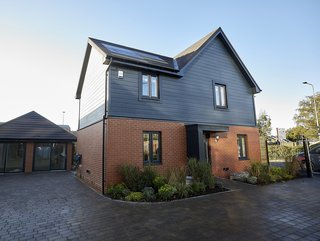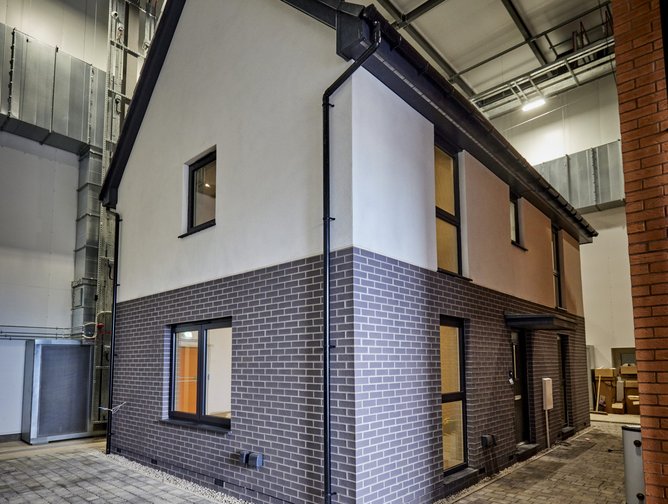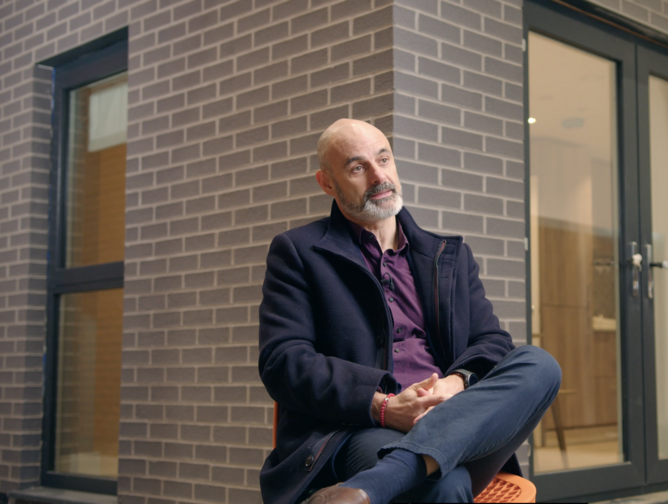Smart technology and the future of sustainable homes

Barratt Developments is the largest housebuilder in the UK. And - as is the case for leaders within any industry - they are tasked with the role of pioneering new sustainability standards for house building.
Firmly taking up this mantle, Barratt is leading the future of green building technologies. The company is part of the United Nations’ Race to Zero campaign and has committed to building regulated zero carbon homes from 2030.
Nowhere is this trademark combination of sustainability and smart home technologies better demonstrated than in its two industry-leading build projects - the Zed House and the Energy House “eHome2”.
To find out more about these projects, the smart home tech being utilised, and what they represent for the future of home building, we spoke to Oliver Novakovic, Technical and Innovation Director at Barratt Developments.
Devising the Zed House
In early 2020, Barratt announced the beginnings of its ambitious Zed House project.
When it comes to setting carbon reduction targets, few companies face more challenges than those in the construction sphere. But, through the technologies and initiatives being deployed in this concept home of the future, Barratt was able to devise the first home built by a mainstream housebuilder that goes significantly beyond the government’s Future Homes Standard. In fact, the Zed House has been able to achieve a reduction in carbon emissions that exceeds 125% of regulated energy.

In its Zed House project, Barratt brought together over 40 leading organisations, to create a sustainability-led blueprint for the housebuilding industry. It sought to demonstrate how much is possible, and how successfully new builds can manage the sustainability standards demanded by both governments and residents.
“The Zed House was very much about looking at a number of different areas around sustainability. Obviously, the primary focus was energy, but we also looked at things like embodied carbon, biodiversity in nature, different types of innovations around offsite construction, and smart technologies,” Novakovic explains.
The results have proved extraordinary. For example, the house delivers the heating that a homeowner would need for four to five days of the week, without taking anything out of the grid.
A data-driven approach, in an ever-evolving project
Data analytics proved critical in measuring both the success of the Zed House and the areas for improvement within it.
This pioneering project was only possible with the partnership of the University of Salford, one of the leaders in researching zero carbon construction and the impact of climate change.
Through this partnership, and by having academics live in Zed House for short periods of time, the smart technology and the performance of the house could be tested. This helped to inform the project’s next phase.
Through an expansive network of integrated sensors, data was collected regarding indoor air quality, thermal comfort, heating and renewable regeneration, to name a few.
“We had 95 sensors and about one kilometre of wiring all around the home to monitor how that home performed. We were building a home of the future, through new technologies, but we wanted to understand what it would be like to live in,” Novakovic explains.
The same approach was then deployed in the eHome2 project which was delivered in partnership with Saint Gobain. But, whereas Zed House was built outside on the grounds of the university, for this next instalment of the project, the house was built in a state of the art, climate-controlled warehouse.
“So we can literally make it snow, rain, generate heavy winds, and go from minus 20 to plus 40°C.”
This means that Barratt can test the home in the kinds of summers and winters that we might see in 2050 or 2100, and implement future-proof solutions, which homeowners can use comfortably.
“We can really implement all of the technologies, put people in the homes, and change the weather to see how it all reacts. Most importantly, that will give us data and information that will help inform the designs and technologies we use in the future and, with different customers, understand what they like and don't like.”

The future of sustainable smart home technologies
Building on these successful foundations, the next step for the company is a nine-month programme of research at the eHome2 chamber.
The Zed House features a wide variety of cutting edge-technology, including overhead infrared panels which provide instant zero carbon heat, air-powered and smart showers, plaster which eliminates air pollutants, appliances which reduce food wastage and water consumption, heated skirting boards, AI solutions to optimise the times at which devices consume electricity (ensuring customers maximise the use of either free solar energy, or low-cost electricity from the grid), and the first car on the market that features Vehicle to Grid technology.
After the completion of the Zed House, its learnings were taken and utilised to shape the next evolution of the project - eHome2.
“Then with the eHome2, we took the learnings from the Zed House and moved that know-how on into the eHome2,” Novakovic explains.
“The main thing we learned is that some of the smart technology we used at the Zed House didn't quite work.”
“The Zed House was very much a concept house. So we put around 50 different ingredients into the home. Now, the reality of it is, to make the 2025 zero carbon cake, we only need 10-15. There were a lot of challenges and opportunities around how that technology communicated, and its consequential impacts.”
“That was a really big part of the project - firstly, do these technologies work on their own? But then, more importantly, do they work in combination?”
As a result, when creating the eHome2, implementing harmonious IoT solutions was set as a top priority.
“So to resolve this, we've formed a unique partnership with a system that becomes the brain of a home. This really helps our customers get the best out of their homes, from energy efficiency, reduction of bills, comfort and all those things, which will become more and more important as you highly insulate buildings and put a lot of technology in.”
Barratt has also partnered with Google Nest, Give Energy, Tribe and a number of other companies, to create a seamless smart home experience. As a result, this approach features some of the most advanced, sophisticated solutions in the world.
“What's been great about the Zed House and eHome2 projects is the fact that we've been able to scour across not only the country, but across the world to find new technologies that can be used.”
Novakovic explains that this remains an ongoing project for Barratt, and that there is a lot more still to come, both in terms of Barratt’s plans for further innovation, as well as the industry’s adoption of smart technologies at large.
“I think house builders will move toward much more technical smart solutions to help deliver some of the zero carbon targets.”
“The opportunity here is that, not only does smart technology help our customers, but the reality of it is that lots of people within house building don't understand smart. So, there's definitely an opportunity to help us as an industry use that technology more effectively and more efficiently.”
“For me, it's quite an exciting time, but it's definitely one that we've got to tackle together.”






